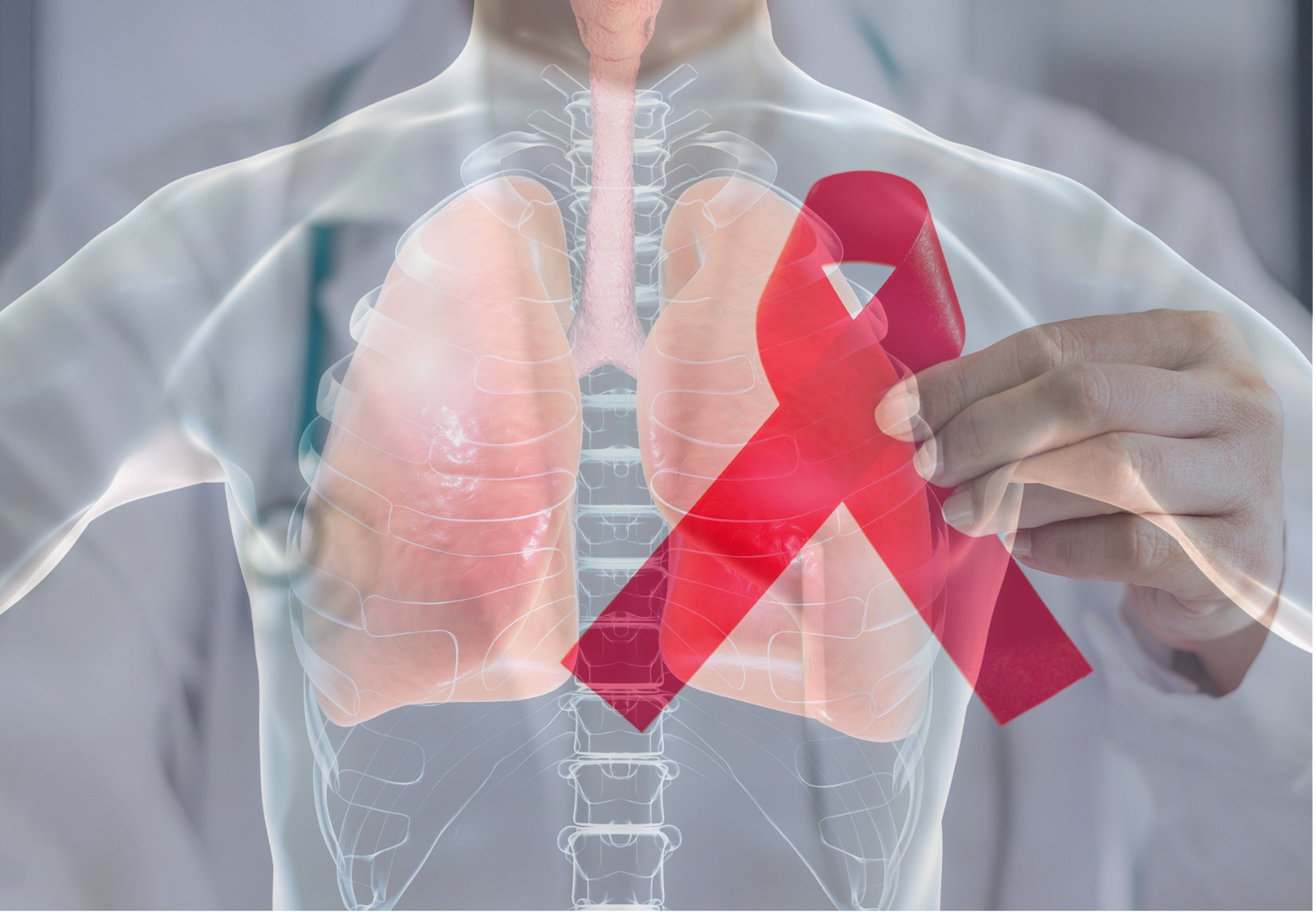
21 Apr HIV and the lungs: Important discoveries in recently published Lancet Healthy Longevity article
Earlier this month, Sebastiaan Verboeket and colleagues published a paper in the Lancet Healthy Longevity journal about the long-term effects of HIV-infection on lung function.
As increasing numbers of people living with HIV have access to antiretroviral therapy, they are able to achieve sustained viral suppression and stay free of any AIDS-related illnesses. Increasingly larger numbers, therefore, reach older age. This has shifted the focus of HIV research towards HIV and ageing, exploring longevity and optimizing health outcomes for people ageing with HIV. Just like people without HIV, they are now also becoming at risk of ageing-related illnesses. Multiple studies have shown ageing-related illnesses, like heart disease or cancer, to occur more frequently and for some at younger ages in people with HIV.
In the prospective AGEhIV cohort study, Sebastiaan and colleagues evaluate the occurrence of ageing-related comorbidities in people living with and without HIV. Using a comparable control group, in the recently published article, they assessed the changes in lung function using spirometry in cohort participants during six years of follow-up. Spirometry tests measure how much and how quickly you exhale air from your lungs. From this test, researchers could detect decreases in lung function and compare the HIV-positive and -negative groups. Since smoking can strongly impact your lung function results were evaluated by smoking and non-smoking subgroups.
The results showed a faster decline in spirometry measures in people with HIV compared to people without HIV, in both smoking and non-smoking subgroups, in spite of the fact that HIV was well suppressed by treatment in the great majority of participants with HIV. The non-smoking group included both never-smokers and former-smokers. If only looking at the never-smokers the difference between HIV-positive and -negative participants showed a similar trend but was no longer statistically significant. This may have resulted from the never-smoking subgroup being limited in size. Importantly, HIV appeared to have different effects on lungs function compared to smoking. Smoking specifically damages the middle-to-large airways. HIV on the other hand appeared to affect more the small airways or the lung tissue in-between the airways. Further research is needed to confirm this finding.
Sebastiaan says, “It will be important to determine what is driving these faster declines in lung function and who is at risk of developing symptoms related to these changes.” He reminds us that, “In this field of research it is important to be cautious in making strong statements too quickly. People who are living with HIV are told they will be fine as long as they take their pills. Although this remains largely the case, it can be difficult to hear of research like ours that shows there may still be some caveats when living with HIV over very long periods of time. Since this study is the first worldwide to evaluate lung function over longer periods of time and many questions still remain it may be a bit too soon to sound the alarm. It should however be a reason for PLHIV experiencing symptoms like shortness of breath to inform their HIV doctor, as it may be related to their HIV-infection.”
It is important to mention that the participants of the study were mostly white men who have sex with men living in the Netherlands. This means there is a need for further research in women ageing with HIV, and in people ageing with HIV in low-resource settings where co-infections like tuberculosis are common and can also contribute to a decline in lung health.
Sebastiaan is supervised, amongst others, by Prof. Peter Reiss and is currently nearing the end of his PhD. His research not only focused on lung health in PLHIV but also on studying various risk factors for health impairments more generally in people ageing with HIV. To read more about the AGEhIV study, visit their website, https://agehiv.nl/
To read a comment on the publication by Paul Collini, Department of Infection, Immunity and Cardiovascular Diseases (IICD), University of Sheffield, click here.
